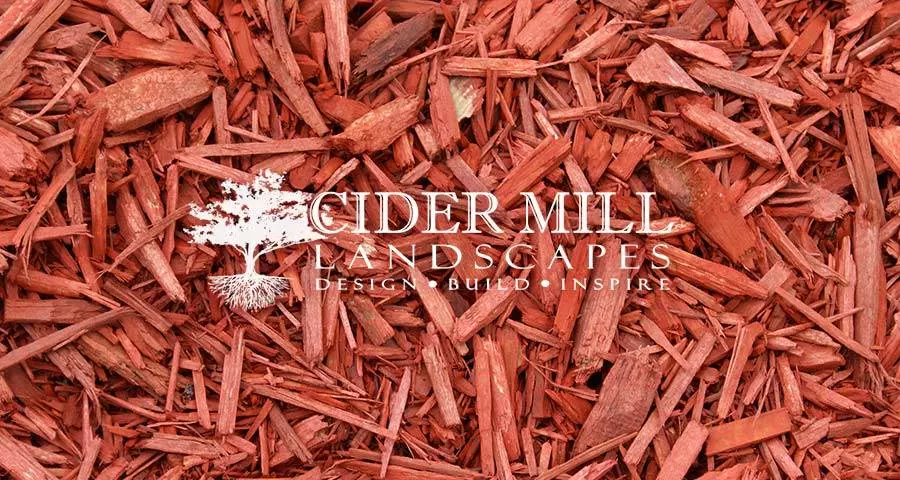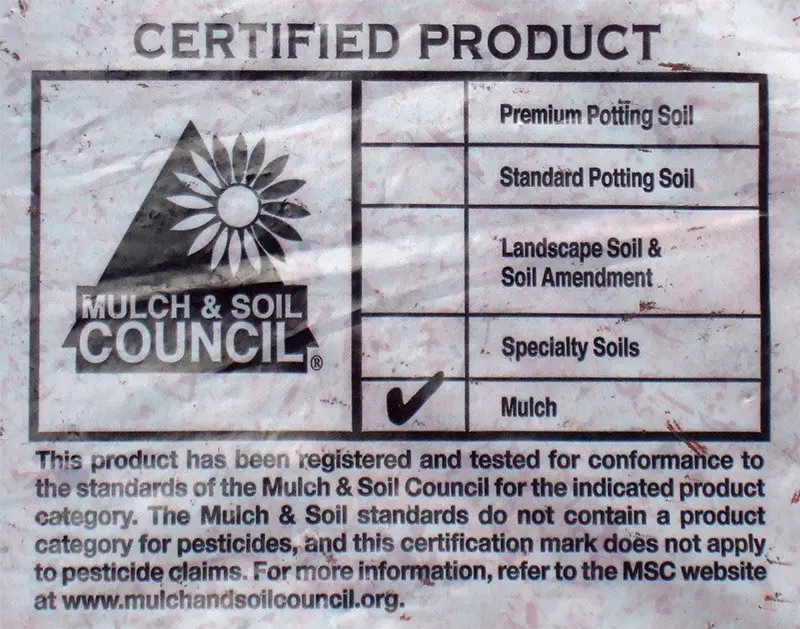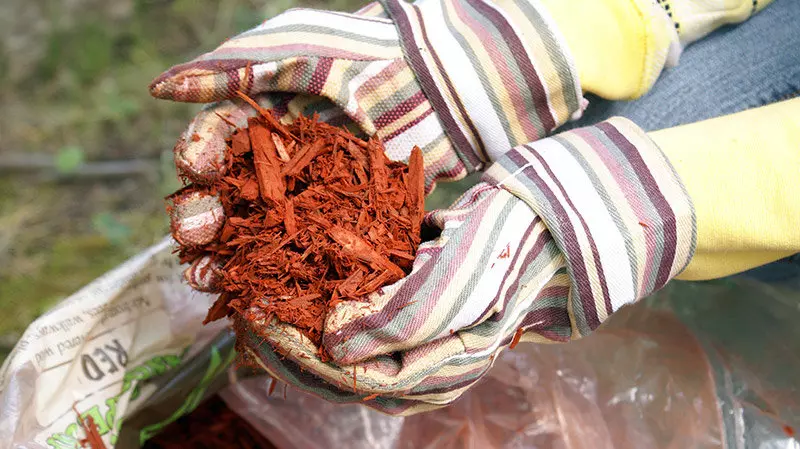Last Updated May 1, 2022
Who doesn’t like the look of a freshly mulched garden? Especially with the perfect dyed mulch to match your color scheme to enhance the look and feel.
Mulch is a great tool that every gardener should make use of. Whether in the home vegetable garden or the mixed perennial border. It has so many benefits that are too good to pass up. These benefits include:
- Soil protection
- Prevents water loss
- Shades the soil
- Adds nutrients to the soil
- Suppresses weed growth
The right mulch can work to improve plant and soil health and build it up over time. Whereas the wrong mulch can damage it.
It can be tempting to pick the perfect colored mulch for your garden. These days you can select almost any color, be it black mulch, brown mulch, red mulch, or other. However, you have to be careful as not all mulches are created equal.
Don’t simply head down to Lowes or Home Depot to choose a dyed mulch because it’s the perfect color.
Below are some things to consider. As well as tips for some great natural alternative options.
You’ll be an expert on mulch and how to choose the right one after this.
1. The Source of Dyed Mulch
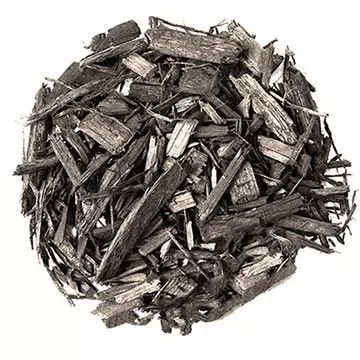
They are treated with various heavy metals, like chromium and copper. These are used to make the mulch last longer or have binding agents and glue in them. Some other contaminants include:
- copper
- aluminum
- arsenic
- lead
- formaldehyde
2. Potential Soil Contamination by Dyed Mulch
The toxic contaminants mentioned above don’t stay in the mulch.
Over time mulch breaks down and water washes over it. This causes those contaminants in mulch colorants to leach into the soil. This sometimes includes the actual dyes used for the coloring. Though those are often harmless.
These chemicals can exist in the soil for a very long time and cause issues with plant growth. They could even end up in food grown in the soil. This is especially the case with heavy metals. Even the chemical contaminants that aren’t long-lasting in the environment can greatly affect young plants. As well as get in the way of fresh landscapes establishing proper soil life.
3. Water Contamination from Dyed Mulch
Adding dyed mulch to your garden that contains these contaminated products puts them out in the environment. Rather than being properly disposed of in landfills. From there they can seep into groundwater. They can also runoff into surface water and cause issues in aquatic environments. This leaves the fish inedible in many cases.
4. Damaging the Soil Ecosystem
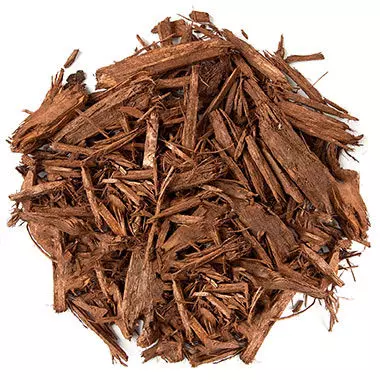
Damaging this ecosystem in any way is not ideal. Without soil life and the organic matter they help maintain in the soil, it is much less nutritious and the structure can break down into a dusty texture.
5. Dyed Mulch is Not Designed to Break Down
One of the greatest benefits of mulches is that they can break down and add nutrients and organic matter to the soil.
However, dyed mulches can be made of wood products that have been treated not to break down. So they do not provide the benefit they should. Healthy soils need inputs of organic matter to help maintain their structure and water retaining abilities.
The Problems with Dyed Mulch
All together the problem with dyed mulch include:
- soil contamination
- water contamination
- damage to the soil ecosystem
- the inability to break down and add nutrients to the soil
These problems with dyed mulch make natural options a far superior choice.
Even if it is the perfect color to match your home decor, the tradeoff is too big and consequential.
Safe Colored Mulches
If you’re still set on the perfect shade of red, brown, or black dyed mulch, look for ones that won’t damage your soil. Look for products that say they are made of untreated wood or shredded bark. Also, look for companies that advertise using safe dyes or that label their products as eco-friendly. As this means they probably avoid heavy metal-treated woods or toxic dyes.
For example the Mulch and Soil Council in the US will put a MSC approval on any mulch products that don’t include dangerous treated woods.
Similar certification may be available in other countries.
Some mulches like cedar have a natural red color and can be a great alternative to red-dyed mulch. However, they still contain lots of natural chemicals that can inhibit plant growth. These should not be used too close to edible plants. As well as distant from seedlings or freshly planted shrubs.
One should leave about 12” of space around newly planted shrubs or perennials.
Once they are established the cedar mulch can be pushed closer.
Choosing the Best Mulch
The best choice for mulch is a natural, organic, untreated one.
There are a lot of options out there for organic mulches. You could try:
- wood chips
- shredded bark
- shredded leaves
- grass clippings
- straw, pinecones
Even cardboard can be used as an effective mulch layer. A lot of them even have natural attractive colors to them without dyes. Not only will these make much better mulches than dyed ones, but they are often much more cost-effective. Sometimes even free!
It is easy to save your fall leaves to use in the veggie patch. In the spring and summer spread your lawn clippings around your shrubbery. These will also cost you absolutely nothing.
Wood chips from down trees and branches are usually available free from your recycling depot, a local arborist, or tree removal company. Just remember any mulch that is high in carbon, such as wood chips or straw, must be balanced out with something with nitrogen. Such as a fresh base layer of compost. This will use up nitrogen as it decomposes.
You can also choose to use inorganic mulches. This includes items such as plastics and stone or gravel.
Plastic sheet mulch can be very useful between rows of crops, but you have to be careful. It does not allow moisture into the soil and it does not allow the soil to breathe either.
Hardscaping with stonework and gravel can be very useful as a decorative mulch. But unlike organic mulches, they don’t add anything to the soil and can heat up in the sun.
Cider Mill Landscapes’ Use of Natural Mulch
Our preferred choice of mulch is triple shredded hardwood bark mulch.
It is an all-natural, organic mulch. It provides a finer look, inhibits weeds better, and holds moisture better than lesser-grade mulch. This mulch also reduces the chance of artillery fungus.
If you have a special request for a dyed mulch we will certainly accommodate. However, we only use a triple shredded mulch with an all-natural dye. The dye will hold its color throughout the year and has a slow rate of decomposition. Typical dye colors are black or brown mulch.
For a completely natural look or a woodland setting, we will sometimes apply woodchips over mulch.
Your Next Landscaping Project
Ready to start a mulching your gardens or other landscaping project?
Don’t forget Cider Mill Landscapes offers free landscaping consultations. We’ll happily come on-site to discuss your upcoming project and provide you with a quote and design materials free of charge.
Learn more and schedule your free landscaping consultation online, or call (484) 574-4666.

